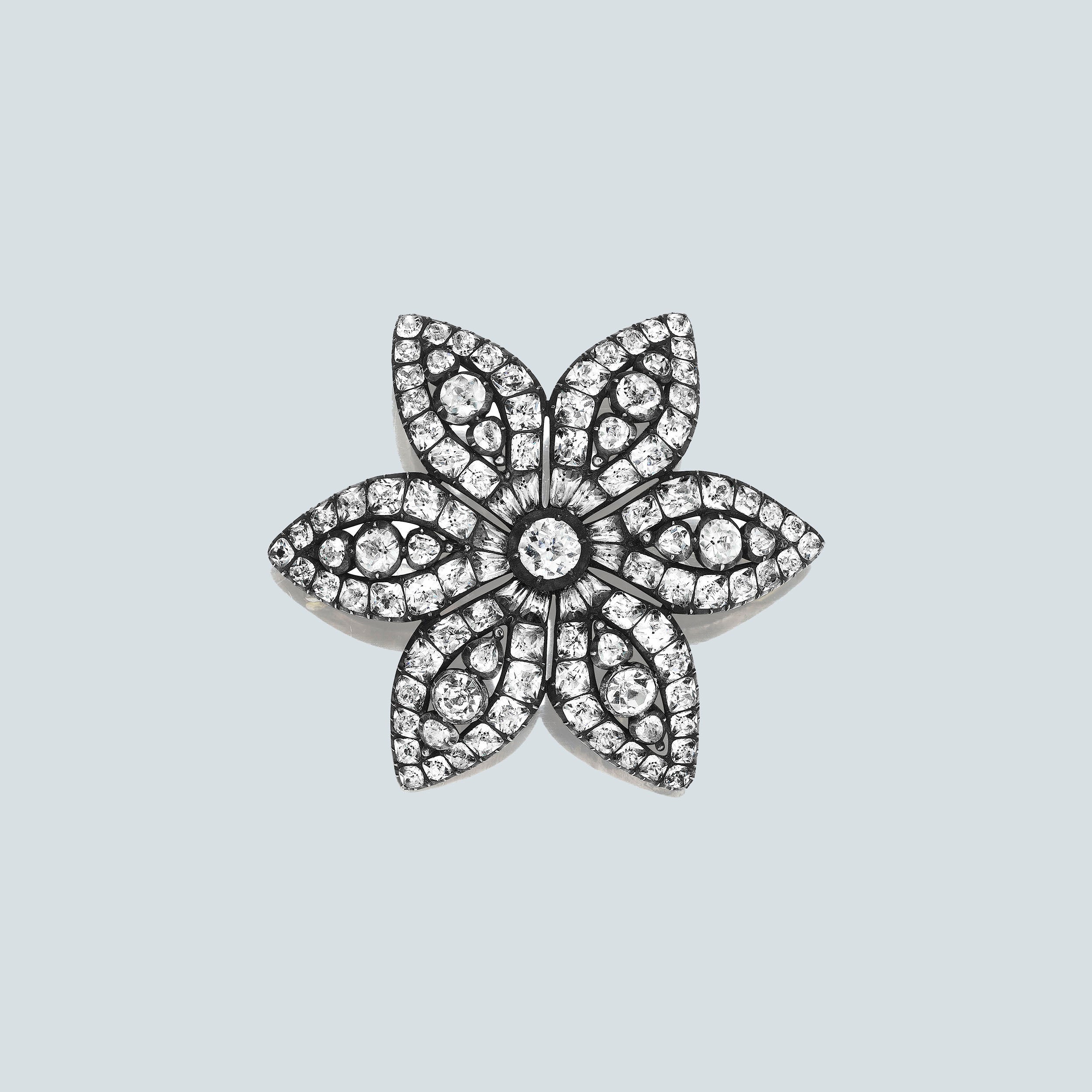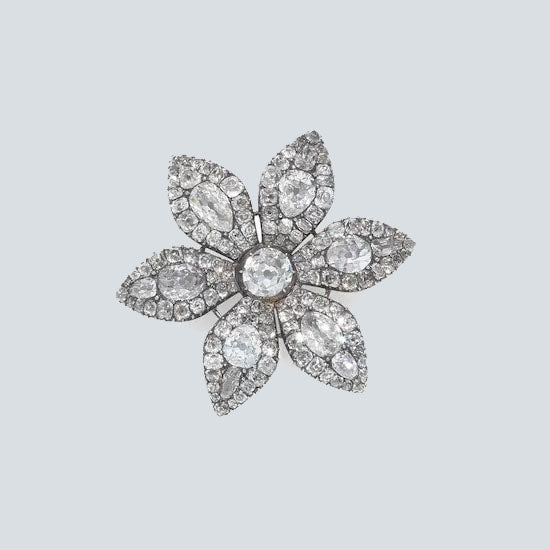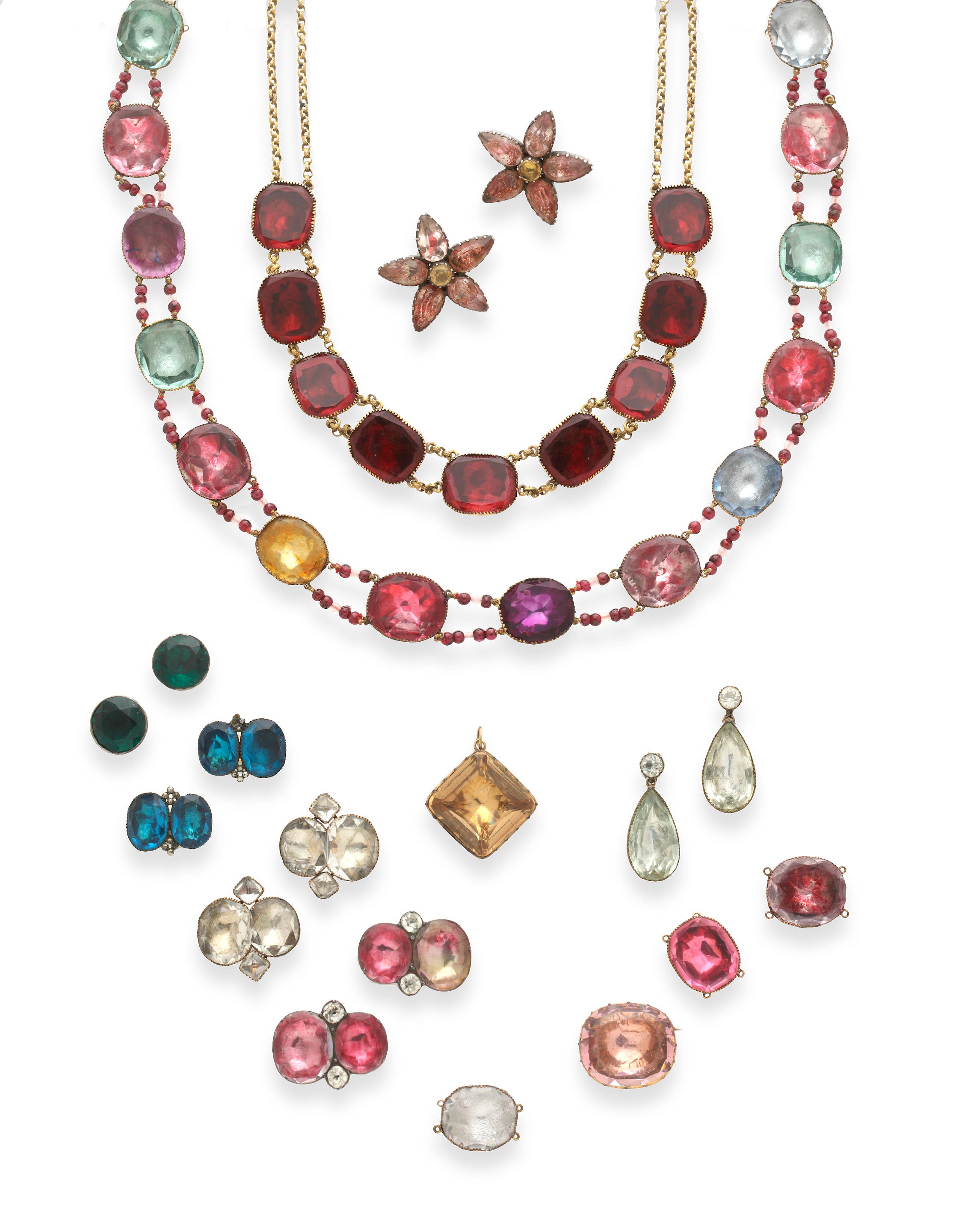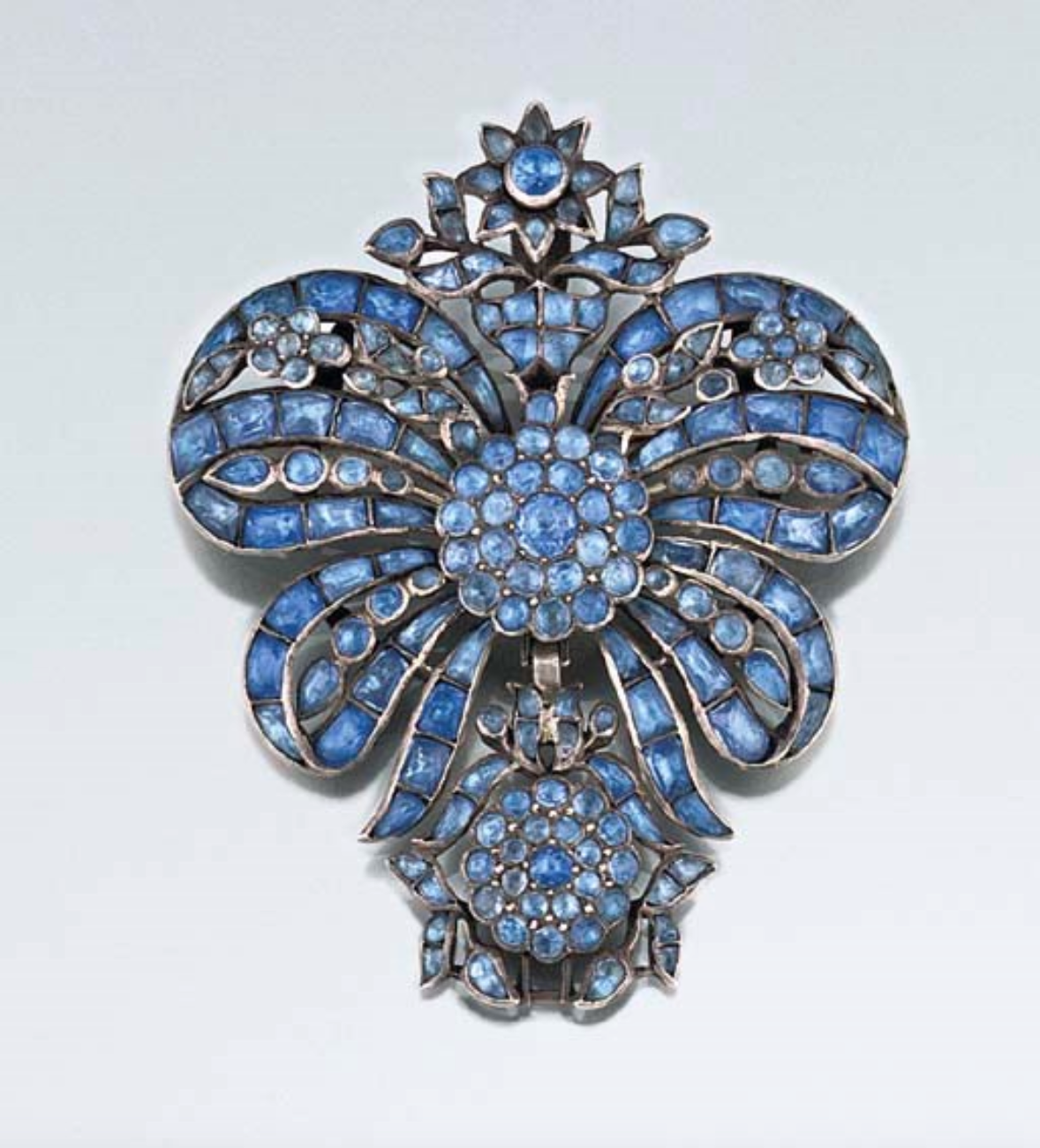What Is Paste Jewelry?
Paste is an ugly name for a material that was used in some of the most ambitious and beautiful 18th century jewelry.
Its story begins in Paris in the 1730s with an ingenious jeweler named Georges Frédéric Strass, hence paste’s other moniker, Strass.
Since diamonds were in high demand in the 18th century -- new mines, new aristocracy, new candles, new fashion -- there were neither enough to go around, nor enough to be purchased by a growing jewelry-loving population in France, England, and other European countries. M. Strass saw an opportunity to invent a special, lead glass that could be polished, cut, and set just like diamonds and colored stones, which ultimately offered tremendous artistic and entrepreneurial potential that was in its own league. Paris went wild for paste and M. Strass became a jeweler to Louis XV and the word was out!

Georgian Foiled White Paste Jasmine Brooch
England, circa 1780
Georgian Foiled Diamond Jasmine Brooch
England, circa 1780

While paste was not considered fine jewelry, it was not viewed as an imitation either. It was lauded for its ingenuity and coincided with a time when jewelry no longer needed to be exclusively associated with religion, royalty, and ritual, but could now be impulsive, frivolous, and fashion-forward. The craftsmanship was identical to that of gemstone jewelry, often employing the use of gold and silver, but the designs were often more embellished because paste could be made, bought, and cut to fit any composition.

A collection of 18th century Georgian colored paste jewelry.
Bonhams Auction, 2015
Some of the most beautiful 18th century jewelry that is collected today has stayed intact because the value of lead glass itself is low, which preserved these remarkable pieces since jewelry's inherent risk of precious stones being removed was not an issue. Frequently over time, diamonds and precious stones get reset to meet the changing taste of the day, so as a jewelry historian, Emily has learned so much from paste.

Extraordinary 18th Century Blue Paste Pendant Brooch
Christies, 2006
Now highly collectible and coveted, 18th and 19th century paste jewelry eventually gave way to later mass-produced glass, rhinestone, and costume jewelry. Larkspur & Hawk’s foiled white quartz collections are sometimes compared to or mis-described as paste, but they are not. Emily reveres and collects antique paste jewelry, but we use foiled gemstones to evoke the feeling of this specialized lead glass that only survives in period examples.
